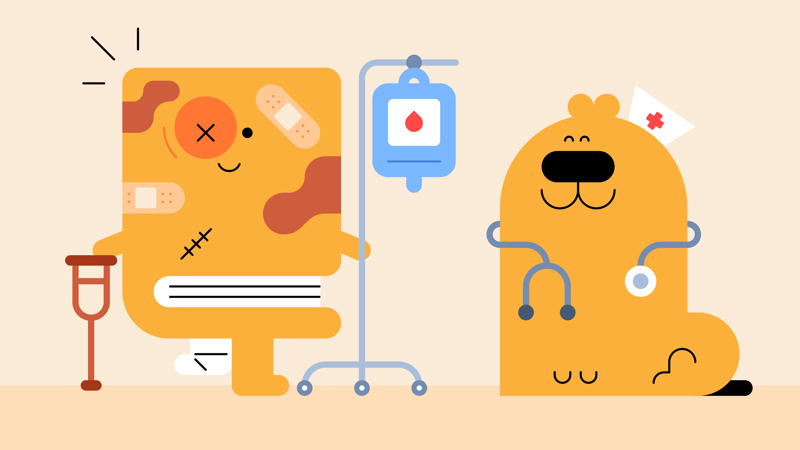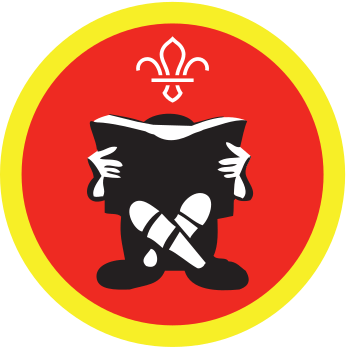
The hospital for badly treated books
You’ll need
- Scissors
- Glue sticks
- Sticky tape
- Scrap paper
- Coloured pens or pencils
- Erasers
- Toothbrush
- Plain wrapping paper
- Books
Before you begin
- Use the safety checklist to help you plan and risk assess your activity. Additional help to carry out your risk assessment, including examples can be found on our safety pages.
- Ask people to bring in any damaged books that need mending.
- Collect damaged books from other places such as charity shops. You could also ask your local library (or school library) if they have any damaged books they’re getting rid of.
Take care of books
- The person leading the activity should ask everyone some questions about caring for books.
-
- Is it a good idea to store books on the floor? No. People could slip on them or kick them, or the book could get dirty.
- Is it OK to have a drink while you’re reading a book? Yes – but only if you’re careful, pay attention, and keep the drink safely away from the book on a stable surface.
- Should you store books in the oven? No. They’d catch on fire!
- Should you write on the pages of a book to help you remember things? No. This ruins the book for other people.
- Can you eat while you’re reading a book? Yes – but only if you’re sure you won’t drop any food on the book. Some things are probably easier to eat while reading than others.
- Should you fold over the corner of a page to remember which page you’re on? No. This makes the pages dog-earned and could even rip them. Use a bookmark instead.
- Is it a good idea to store books in a cupboard? Yes. Even though you wouldn’t be able to see the books easily, a cupboard would keep them safe.
- If people think the answer is ‘yes’, they should stand up. If people think the answer is ‘no’, they should sit down.
- After each question, the person leading the game should choose someone to explain their answer.
- Everyone should repeat steps one to four until they’re book care experts.
Become an apprentice book doctor
- Everyone should split into small groups; an adult should join each group.
- Each group should think about different reasons that books might need treatment in their hospital. Some may have broken spines, torn pages, or dog-eared pages; others may have scribbles on the pages, or food and drink stains.
- One person from each group should collect a book.
- Each group should work together to diagnose the book’s injuries, and think about how they may have happened.
- Each group should work together to bring the book back to health. They should tape up tears and broken spines, sponge or brush off marks, erase pencil marks, or make a new cover for the book from paper or wrapping paper.
- Once each group has finished healing a book, they should put it carefully to one side. They should collect another book, and repeat steps four and five until all the books are in recovery.
In recovery
- Everyone should gather back together with all of the recovering books.
- Everyone should think about what they’ll do with all of the books now that they’re better and ready to be enjoyed again. Perhaps they could start a library in their meeting place, have a book sale, or donate them to a local cause.
Reflection
This activity needed everyone to figure out how to use their skills to help a damaged book. Even books with a bit of normal wear and tear needed fixing to stop them getting worse. Can anyone remember some of the ways books could get damaged? Can anyone else remember how to mend different kinds of damage? The next time people pick up a book, whether it’s from the library or a bookshelf at home, what will they do to make sure it’s as good as new once they’ve finished with it? Well done to everyone for bringing so many books back to life!
Safety
All activities must be safely managed. You must complete a thorough risk assessment and take appropriate steps to reduce risk. Use the safety checklist to help you plan and risk assess your activity. Always get approval for the activity, and have suitable supervision and an InTouch process.
- Scissors
Supervise young people appropriately when they’re using scissors. Store all sharp objects securely, out of the reach of young people.
- Glue and solvents
Always supervise young people appropriately when they’re using glue and solvent products. Make sure there’s plenty of ventilation. Be aware of any medical conditions that could be affected by glue or solvent use and make adjustments as needed.
It’s up to you how much the adults help. Take a step back, or get more involved, depending on each group.
Make it accessible
All Scout activities should be inclusive and accessible.
Once everyone’s a fully qualified book surgeon, you could offer your services to others in the community. You could set up a book repair service at a school or local library and mend people’s books using the techniques everyone learned in this activity.
Adults can prompt and help people, but young people should share their ideas and solutions first. Everyone should discuss people’s ideas together as a group.

